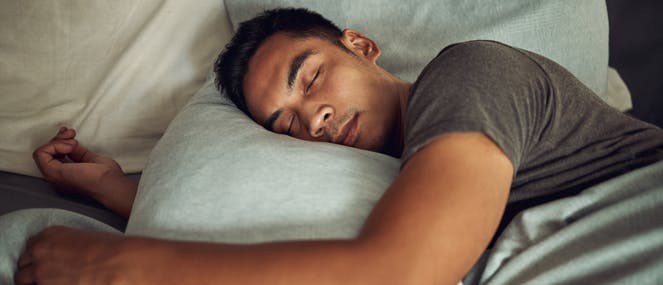
- Health hub/
- A Guide To Men's Health And Supplements/
- Understanding gynecomastia (male breasts)


What is gynecomastia?
Gynecomastia is the medical term for breast tissue growth and breast enlargement on a man. It can occur during adolescence and in older men due to an imbalance of sex hormones. It can also occur at any age in the overweight or obese, although this is termed pseudogynecomastia. It can be a troubling issue for men, who may lose self confidence, or feel embarrassed when they take their shirt off while swimming or when intimate. Gynecomastia is also different from muscular growth of the pectoralis (chest muscle) in men who perform strength training, upper body exercises or heavy manual labour.
Did you know? – Gynecomastia is the medical term for breast tissue growth and breast enlargement on a man.
What causes gynecomastia?
There are a number of known causes, or combination of causes of gynecomastia, including:
- Hormonal imbalance - Testosterone is the dominant "male" hormone that helps foster the male characteristics of larger muscles, a deeper voice, and increased body hair. Some men may have a lower level of testosterone relative to oestrogen, especially pubescent boys or older men, resulting in the development of breast tissue.
- Excess body fat – The storage of excess body fat in the chest of a man.
- Klinefelter's syndrome - A condition in which men have an extra X (female) sex chromosome.
- Excessive alcohol consumption – Drinking too much on a regular basis is thought to trigger a drop in testosterone levels.
- Steroid use – Estrogen is naturally occurring in small amounts in men, however, steroid use can trigger an excess of eostrogen. Oestrogen is the dominant female hormone, and it has a strong influence on where fat is distributed, such as the hips, breasts, thighs, and buttocks.
- Medication – Some medications used to treat pain, arthritis and inflammation can act like steroids in the body and reduce testosterone levels.
Did you know? – Some of the most common causes of gynecomastia include a hormonal imbalance, excess body fat, excessive alcohol consumption and steroid use.
How do you treat gynecomastia?
The cause of your gynecomastia will generally determine the best treatment. Some treatment options for gynecomastia include:
Lifestyle changes - Lifestyle changes to lose body fat and reducing your alcohol intake is a good starting point. However, performing chest strengthening exercises (such as pushups) to firm up your chest muscles without performing cardiovascular exercise to remove stored body fat may actually make matters worse. You can’t reduce body fat in one area by just training those specific muscles. Developing firmer and larger muscles in your chest without losing any fat on top may actually worsen the appearance of male breasts. To lose fat in the chest, you need to follow the same principles for fat loss that apply to your whole body, such as regular exercise and a moderate kilojoule intake.
Alternative medication – Ask your healthcare professional if any medication you are on could be causing breast growth, and see if any alternatives are available.
Others – You may wish to discuss with your healthcare professional the medical treatments for gynecomastia includes drugs, gels and surgery.
Did you know? – The best treatment for gynecomastia will depend on its cause, but may include lifestyle changes, alternative medications or surgery.
This information in this article is taken from The H-Factor Diet by Andrew Cate. ABC Books 2009.




